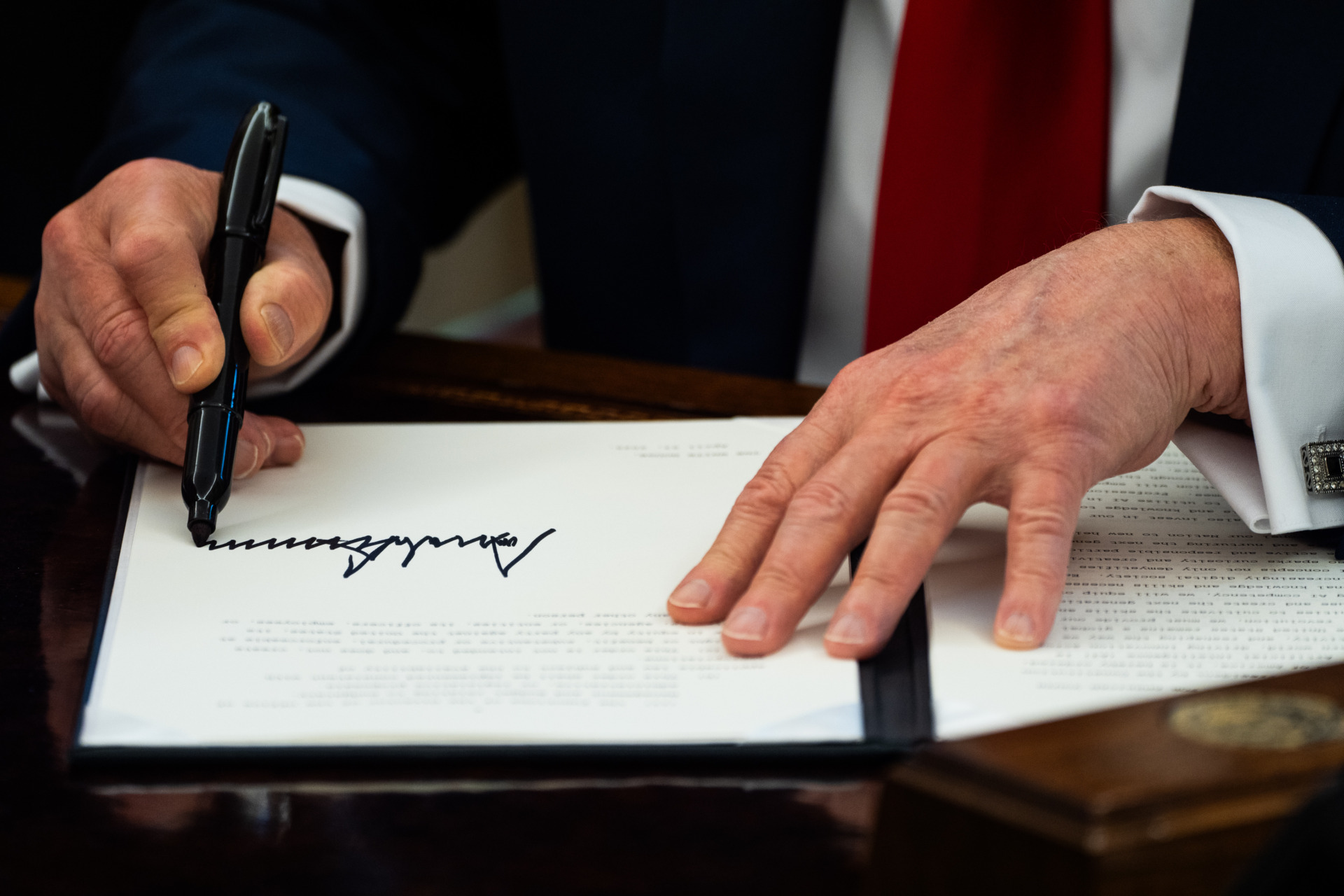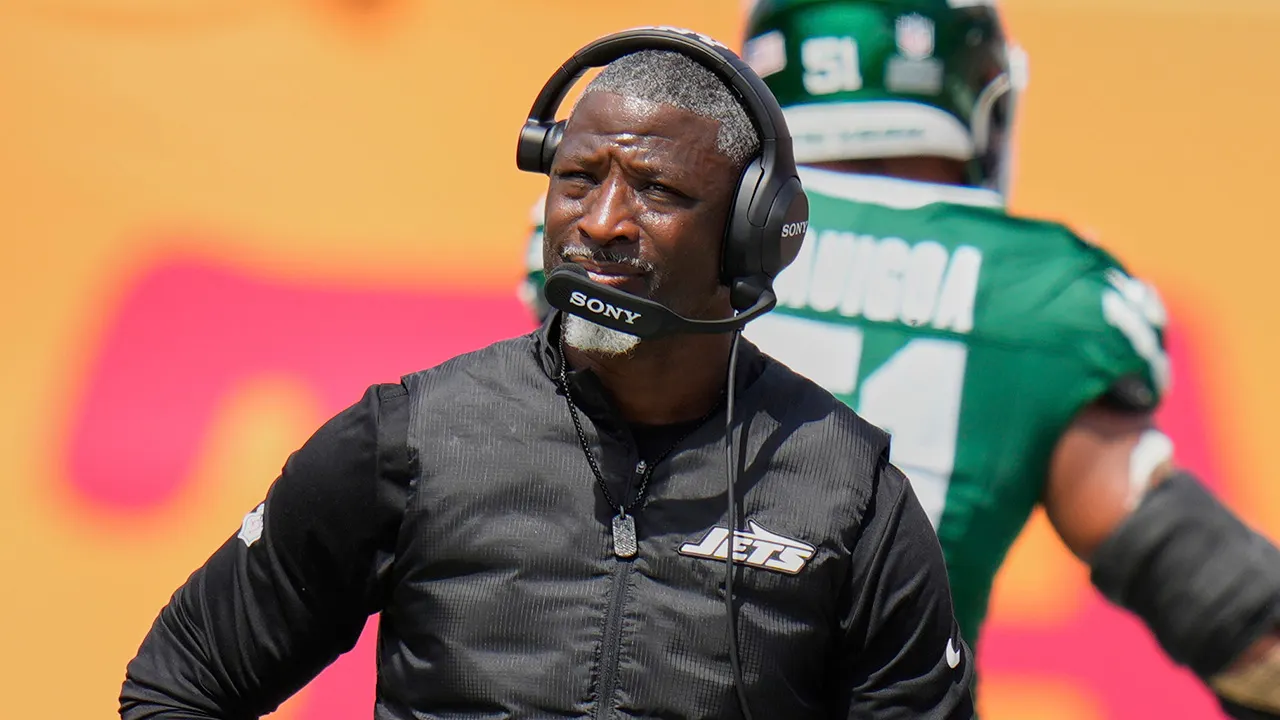
With Executive Orders (EOs), American presidents are meant to “take care that the laws be faithfully executed,” not make new laws. Instead, President Donald Trump has issued a blizzard of EOs that change laws, revoke rights, and selectively punish people from certain groups. The orders redirect U.S. law and social policy in ways so dramatic that they would have been unthinkable were it not for the decade-long public opinion campaign of dangerous speech and disinformation waged by Trump and his supporters. Trump’s orders also continue that campaign because, unlike those of previous presidents (including Trump himself during his first term), they are full of dangerous, inflammatory rhetoric. Understanding this shift requires not only examining what these orders do, but how — and why — they became acceptable to many in the first place.
The purpose of EOs in the United States is to give presidents the ability to manage the operations of the executive branch. The orders cannot institute a new statute, but they can instruct the branches of government on policy priorities and how current laws should be implemented. Presidents have long relied on such orders to swiftly implement policy priorities, especially at the start of a new administration or in response to military, economic, or public health crises. In the wake of the Sept. 11, 2001 attacks, for example, President George W. Bush used EOs to activate military reservists, freeze the assets of suspected terrorists, and lay the groundwork for the Department of Homeland Security. President Barack Obama used one to create the Hurricane Sandy Rebuilding Task Force. And during his first term, Trump used executive authority to respond to the COVID-19 pandemic, including by signing an order aimed at preventing companies from hoarding or engaging in price-gouging for essential medical supplies like masks, gloves, and ventilators.
In the first 100 days of his second term, Trump signed a staggering 143 EOs. Through these EOs, the Trump administration has suspended refugee programs and expanded fast-track deportations. Another order stripped federal recognition from non-binary and transgender people, effectively erasing their existence from key legal protections and data collection. In a disturbing overreach into the legal system, Trump’s directives have targeted law firms that defended migrants, challenged election laws, and advocated for diversity, equity, and inclusion (DEI) policies, portraying them as enemies of the state. And perhaps most chillingly, an EO mandated that federal prosecutors pursue the death penalty in any capital case involving an undocumented defendant — reviving a brutal punishment while applying it in a racially and politically charged context. Each of these EOs was supported with fear-inducing disinformation, including claims that the country was being overrun with migrant criminals, that “real Americans” were under siege, and that only sweeping, repressive governance could save the nation.
These EOs should not have come as a surprise. Trump and his supporters laid the groundwork for over a decade, repeatedly making false claims of national and social crises. During the 2024 presidential campaign, I worked alongside a team of research fellows to document dangerous speech, which is rhetoric that increases the risk that its audience will commit or condone violence or other serious harm against a group of people. The rhetorical threats Trump employed during his campaign are directly echoed in the titles and content of his second-term EOs.
Consider the following examples:
On his first full day in office, Trump issued Protecting the American People Against Invasion, an executive order that dramatically expands the government’s power to deport and detain non-citizens without court oversight, while also stripping funding from sanctuary cities.
The EO’s framing of migration as a literal “invasion” mirrors the violent metaphors and dehumanizing narratives used on the campaign trail. Trump frequently cast immigrants — particularly those from Latin America, Africa, and Muslim-majority countries—as existential threats to the nation. He has referred to migrants as “animals,” said that they were “poisoning the blood” of the United States, and falsely claimed that they brought crime and disease into the country.
Studies have repeatedly shown that immigrants do not commit crimes at a higher rate than U.S. born residents and violent crimes actually decreased in 2024, but Trump’s supporters continued to echo his dehumanizing narratives, spreading conspiracy theories such as the “great replacement,” and likening the border to a battlefield.
Several EOs have also used dangerous speech to justify stripping rights from trans people. Protecting Children from Chemical and Surgical Mutilation prohibits federal funding for gender-affirming care for anyone under 19 and another, Ending Radical Indoctrination in K-12 Schooling, threatens schools with loss of federal funding if they respect trans students’ identities or provide supportive resources, or if they teach what the order calls “discriminatory equity ideologies,” such as critical race theory.
Another EO, Defending Women From Gender Ideology Extremism and Restoring Biological Truth to the Federal Government, eliminates federal recognition of trans and non-binary people, falsely claiming that “efforts to eradicate the biological reality of sex fundamentally attack women by depriving them of their dignity, safety, and well-being.” The text of the EO employs versions of the word “protect” eight times, stating that the Trump administration “will defend women’s rights and protect freedom of conscience.” Trans people are not the threat described in this narrative. They are, in fact, far more likely to be victims of violent crime than cisgender people. But the president has consistently portrayed trans people, a small minority of Americans, as a danger and himself as the protector. “We will get critical race theory and transgender insanity the hell out of our schools, and we will keep men out of women’s sports,” Trump said at a rally in Madison Square Garden in New York City just days before the election. He went on to say he would “defend religious liberties” and other rights as if they were being infringed. In addition, the Trump campaign spent millions of dollars on an ad criticizing Vice President Kamala Harris’s policies on transgender issues. “Kamala is for they/them. President Trump is for you,” the ad’s narrator told Americans. Trans people were also singled out during the campaign by Republican politicians with one referring to them as “demons” and “mutants.”
Residents of U.S. cities have also been frequent targets of Trump’s dangerous speech and executive actions. During his third presidential campaign, he described Philadelphia as “ravaged by bloodshed,” characterized D.C. as a “rat-infested, graffiti-infested, shithole,” and stated, “the blood-soaked streets of our once great cities are cesspools of violent crimes.” Trump and his supporters sometimes falsely claimed that urban crime was out of control because of undocumented migrants or that urban unhoused populations were making police officers sick. In reality, crime is down in U.S. cities across the country, but Trump’s rhetoric has convinced his supporters otherwise. For example, a recent poll found that while 64 percent of Democrats and Democratic-leaning voters view Los Angeles as a safe city, only 21 percent of Republicans and Republican-leaning voters agree.
Again, there are clear connections between the dangerous rhetoric and rights-restricting policies. The July 2025 EO, Ending Crime and Disorder on America’s Streets, effectively criminalizes urban poverty. It authorizes involuntary civil commitment of unhoused people and prioritizes crackdowns on loitering (a charge long recognized as discriminatory), drug use, and squatting. Another EO, Declaring a Crime Emergency in the District of Columbia, allowed Trump to seize control of the D.C. Metropolitan Police Force and hand authority to the U.S. Attorney General. He reinforced the order by deploying National Guard troops to the city – despite declining crime rates.
These EOs were all made possible by the dangerous speech that came before them. They were not responses to real-world crises — they were part of a plan, many of them ready to go on day one. The fact that many were issued immediately after Trump took office underscores the role dangerous speech played not just as campaign rhetoric, but as a strategy for justifying and enabling policy change.
When people are convinced that their lives, their families, or the very future of their country is under threat, they become more willing to condone — or even support — violence and repression in the name of protection. Research shows that feelings of chaos or societal breakdown often drive support for authoritarian leaders, who capitalize on that fear, portraying migrants, minority groups, and political opponents as existential threats and asserting themselves as the only option for rescue. This rhetoric does not just justify extreme policies; it narrows our moral imagination, making cruelty seem necessary and dissent seem dangerous. In this climate, authoritarian leaders can more easily consolidate power, claiming to restore order while simultaneously dismantling the very institutions that uphold democracy.
Although there has been pushback to Trump’s policy agenda, both from the courts and the public, many Americans within Trump’s party continue to support his actions, especially when it comes to immigration. A poll conducted by Pew in June 2025 found that 78 percent of Republicans approve of Trump’s immigration agenda compared with only 9 percent of Democrats. Similarly, 75 percent of Republicans believe that Trump’s harsh stance on immigration will decrease national crime rates, while most Democrats believe that the policies will not have any effect on crime rates at all. This finding reveals the underlying impact of decades of rhetoric that has falsely characterized immigrants as criminals, rapists, and a general danger to the country.
Trump’s early second term executive orders rely on the public having already internalized a feeling of chaos and threat. Without the imagined crises, his EOs might have appeared as the unprecedented overreaches that they are. But in an information ecosystem shaped by years of dangerous speech and disinformation, they register instead as necessary steps to restore order. By weaponizing fear, inventing crises, and redefining enemies, Trump has laid the rhetorical groundwork for sweeping executive actions that would have been unthinkable just a decade ago.
Recognizing the role that dangerous speech plays in this shift is essential to resisting it. If civil society does not challenge the false narratives that frame repression as rescue, there is a risk that the EOs will create the very real crises — a real democratic and social breakdown born not of migrant “invasions” or internal enemies, but of unchecked authoritarian power.



